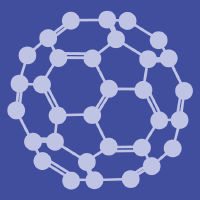Topic Menu
► Topic MenuTopic Editors

Materials and Surface Treatment Processes Used for Engineering Applications
Topic Information
Dear Colleagues,
In the last few decades, the use of new technologies for surface treatment has represented one of the most important emerging issues in industrial research. Additionally, in industrial practices, there is currently an emerging trend of utilizing advanced materials as antiwear, anticorrosive, and anti-softening coatings of materials’ component. At the same time, developing new coatings derived from a wide range of material sciences, generally characterized by specific performance for each condition, can represent a valid alternative to hazardous materials coatings. Moreover, the combinations of materials in the form of multilayer systems and concentration-graded coatings may also find large application as a protective shield against high temperatures for structural components. Knowledge in deposits’ properties and durability are required so as to understand the quality and characteristics of products and implement the design of the coating system. This Special Issue aims to provide an instrument for the discussion of recent advances in the analysis and characterization of materials used in surface treatment. The issue will also include studies on life cycle assessment, as well as the development of new methods for prediction and damage monitoring during the service life. In particular, the issue will deal with both depositions performed through traditional surface treatment processes already widely used in industrial processes and more economic and ecofriendly technologies but with wide potential applications. Studies devoted to nanostructured surface treatments are also welcome. Authors are encouraged to submit contributions dealing with:
- Coating and thin films characterization in relation to the main fields of use;
- Structure of materials and their interfaces;
- Mechanical and micromechanical properties of materials;
- Prediction of lifetime (durability);
- Microstructural and mechanical analysis;
- Damage assessment Identification of the stage of the defects;
- Classification of damages Corrosion resistance assessment;
- Evaluation of advanced non-destructive techniques for monitoring Methods to predict material degradation;
- Nanostructured surface treatments.
Dr. Claudia Barile
Dr. Gilda Renna
Topic Editors
Keywords
- coatings
- thin films
- depositions
- corrosion monitoring
- material characterization
- monitoring techniques
Participating Journals
| Journal Name | Impact Factor | CiteScore | Launched Year | First Decision (median) | APC |
|---|---|---|---|---|---|

Applied Sciences
|
2.7 | 4.5 | 2011 | 16.9 Days | CHF 2400 |

Coatings
|
3.4 | 4.7 | 2011 | 13.8 Days | CHF 2600 |

Materials
|
3.4 | 5.2 | 2008 | 13.9 Days | CHF 2600 |

Metals
|
2.9 | 4.4 | 2011 | 15 Days | CHF 2600 |

Nanomaterials
|
5.3 | 7.4 | 2010 | 13.6 Days | CHF 2900 |

MDPI Topics is cooperating with Preprints.org and has built a direct connection between MDPI journals and Preprints.org. Authors are encouraged to enjoy the benefits by posting a preprint at Preprints.org prior to publication:
- Immediately share your ideas ahead of publication and establish your research priority;
- Protect your idea from being stolen with this time-stamped preprint article;
- Enhance the exposure and impact of your research;
- Receive feedback from your peers in advance;
- Have it indexed in Web of Science (Preprint Citation Index), Google Scholar, Crossref, SHARE, PrePubMed, Scilit and Europe PMC.


